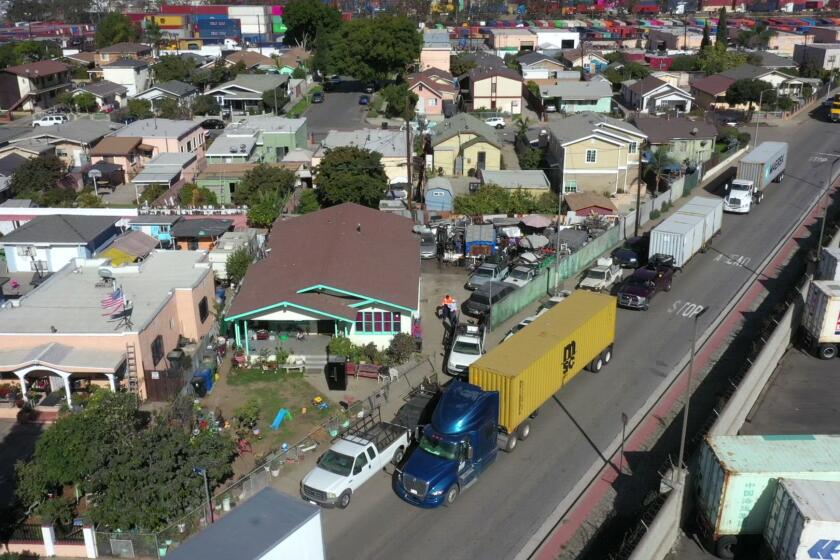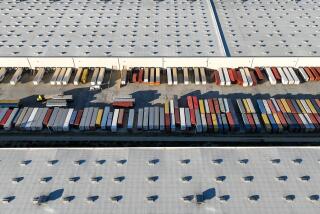As containers stack up in Wilmington, so do the zoning complaints
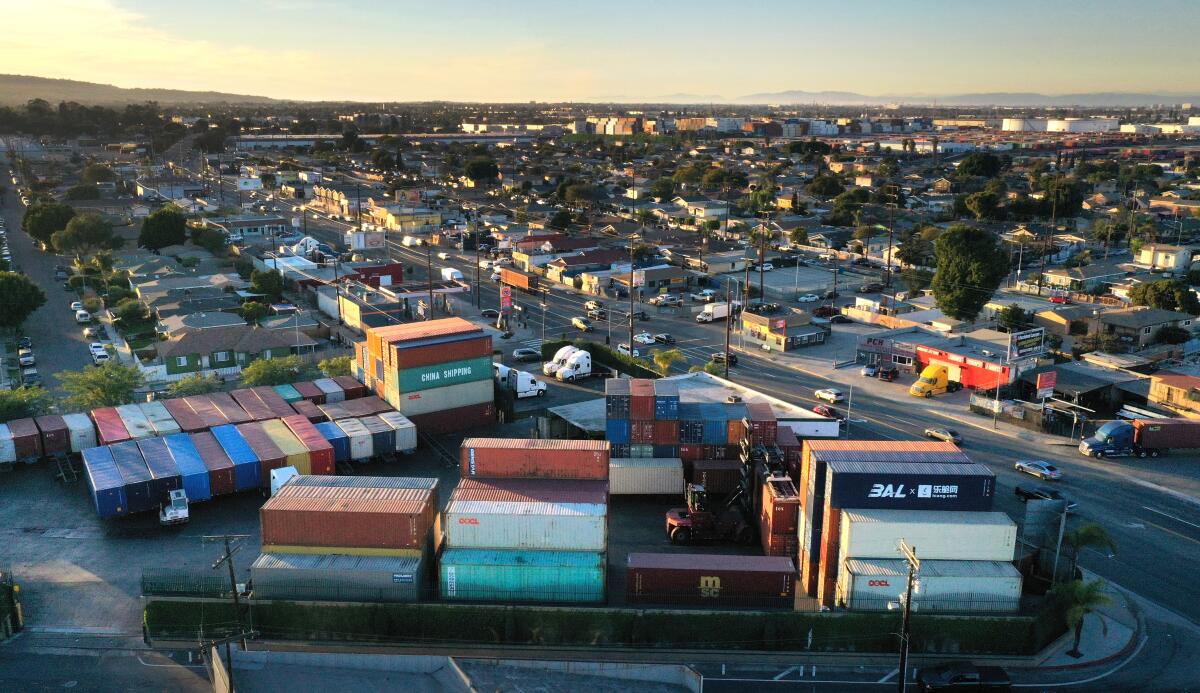
To drive the streets of Wilmington is to encounter a community at odds with itself. Warehouses, refineries, tank farms, wrecking yards, railway junctions riddle the community, pitting residents and businesses against one another in a stalemate over quality of life and economic opportunities.
No point of contention is more conspicuous than the brightly colored shipping containers that, since the start of the pandemic and the concurrent hiccup in the global supply chain, have swept into Wilmington like a fast-moving tide.
Companies like ITS ConGlobal, CMI Transportation and Martin Container stack them 40 feet high on open ground near the Carson border. Others squeeze them in as best they can like homeowners who sell driveway space on game day.
Los Angeles manages this flood. The Department of Building and Safety enforces municipal codes that set restrictions for container storage and stacking, and 15 inspectors work the streets of South Los Angeles and Wilmington, conducting property inspections and investigating complaints.
The 311 call that came in last year on June 23 was typical of what inspectors hear from residents in Wilmington.
“Containers being stacked higher than the gate. Per business permit that is not allowed.”
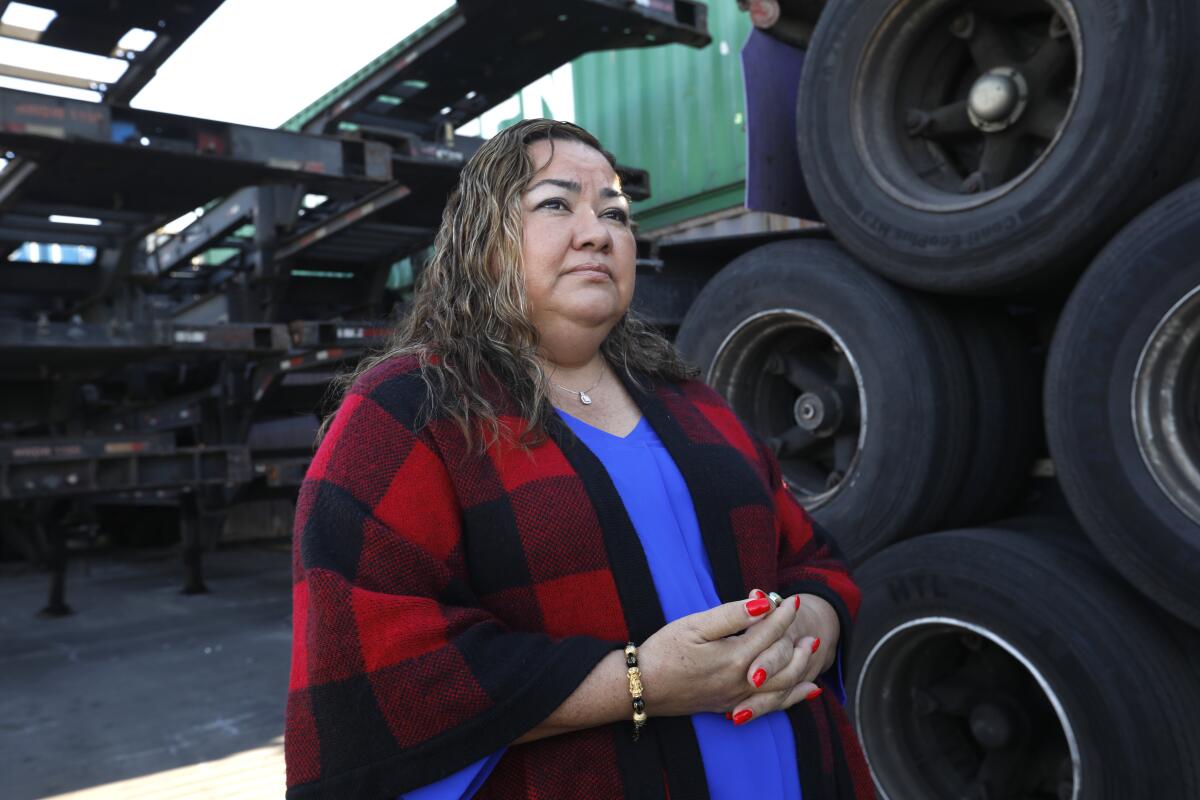
The caller had identified a property on Pacific Coast Highway, and within two weeks, after investigation, a formal citation was issued.
New World Drayage is one of the smaller storage yards in Wilmington. Depending on business, red, beige and blue containers can be seen above a block wall, set back from the sidewalk with its well-maintained landscaping and décor: a ship’s anchor, chain and cleats, homage to Wilmington’s seagoing past.
Across the street is a residential neighborhood, and since June 2020, the Department of Building and Safety has received 15 similar complaints about the company. The department only investigates complaints that residents of Los Angeles submit through the city website or 311 system.
Residents of Drumm Avenue in Wilmington say truck traffic from the Port of Los Angeles makes them miserable.
Gilma Diaz owns the facility, and nearly a year after being cited, speaks openly about the violation. She admits to having close to 150 containers on the property last year and stacking them four high due to space restrictions. She leases the triangular-shaped property, which is a little less than two acres.
It’s hard to turn away business, she said, which can be seasonal. For instance, since the start of Chinese New Year, she has been holding about 30 containers, a few stacked two high.
“Who knows where we’ll be tomorrow?” she said.
New World Drayage charges $50 a day to store a container, and clients would rather keep them here than at the port, where it is more expensive (up to $450 a day, she said) and more difficult to reach (long queues and appointment times).
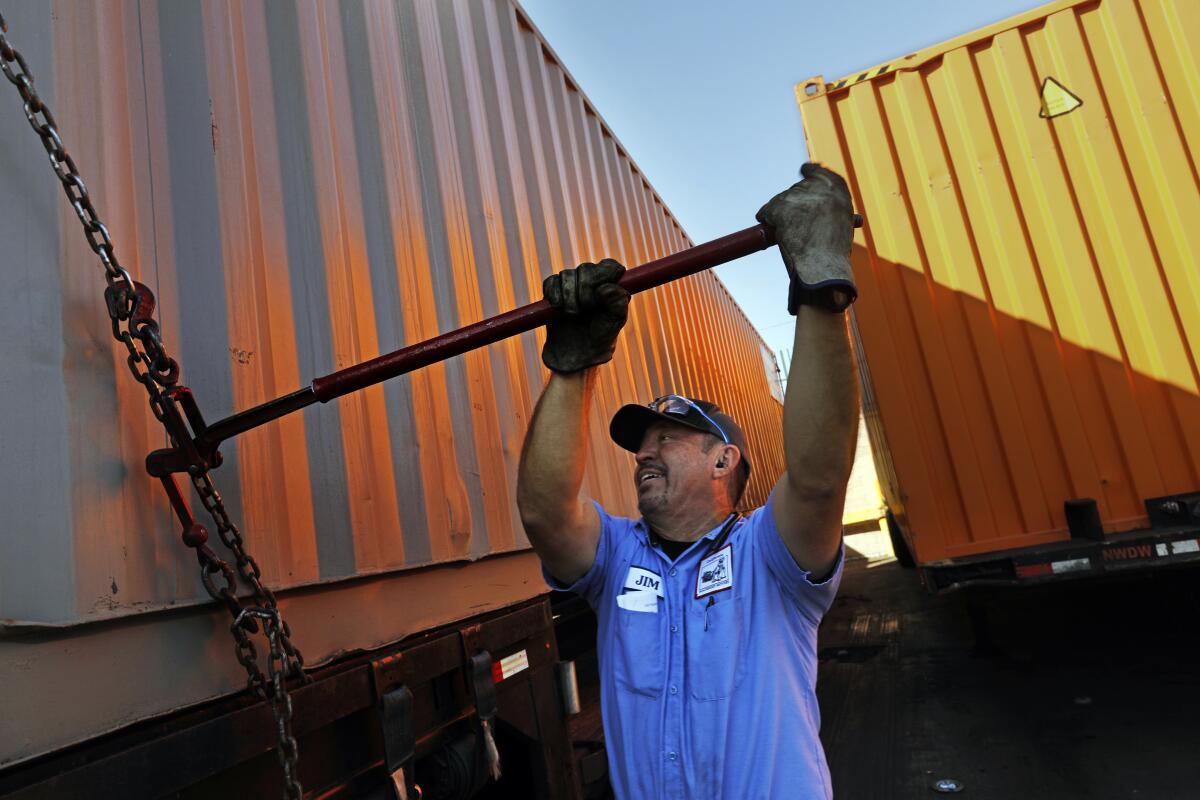
The facility operates from 6 a.m. to 10 p.m. and according to Diaz, the daily flow — containers in and containers out — is about 25. They arrive from the ports and stay for four to five days before heading out to destinations in Northern California, Arizona and Nevada.
Diaz, 47, said she doesn’t mean to be defiant, but she has been stacking containers on her property since she opened the depot in 2015, and each time an inspector stopped by, she got the impression that stacking was allowed as long as the containers weren’t more than two high.
She also complained about what she considers the city’s double standard. Less than a mile away from Diaz’s business, International Cargo Equipment stacks containers four high across the street from a neighborhood of single-family homes, and nearby Martin Container stacks its containers four- and five-high across from a residential cul-de-sac.
“How come they are able to do business?” Diaz asked. “And I’m on a property where this is not allowed?”
The simple answer: Older storage facilities are exempt from zoning regulations approved by the city in 2006 for newer facilities, like Diaz’s.
The presence of exempt properties is a reminder of Los Angeles’ messy history with Wilmington as it has tried for the last 100 years to balance the needs of the port with the needs of the residents.
Activists argue that a chronic imbalance has left the community underdeveloped, so that there are container storage yards instead of a Costco or Walmart.
The lack of such development, however, has kept the community mostly affordable for low-income families, who now find themselves fighting for better living conditions.
“Those container storage yards operate like terminal facilities in the port, and this is the jurisdiction of the city, not the port,” said Valerie Contreras, who has lived here for 35 years. A container storage facility is “heavy industrial use, and with that comes truckers and 24/7 operations that affect safety, quality of life and environment. They must abide by the city ordinance.”
The tension is not new. In 2006, a widening trade deficit flooded Wilmington with containers, and back then, residents spoke about the blight associated with storage yards: weeds, rats, blocked views, the fear they might tumble down in an earthquake.
County Supervisor Janice Hahn, who was on the City Council, called the presence of the yards one of the worst abuses by the ports of Los Angeles and Long Beach and worked to change zoning ordinances in Wilmington that included height restrictions, as well as fencing and landscaping requirements.
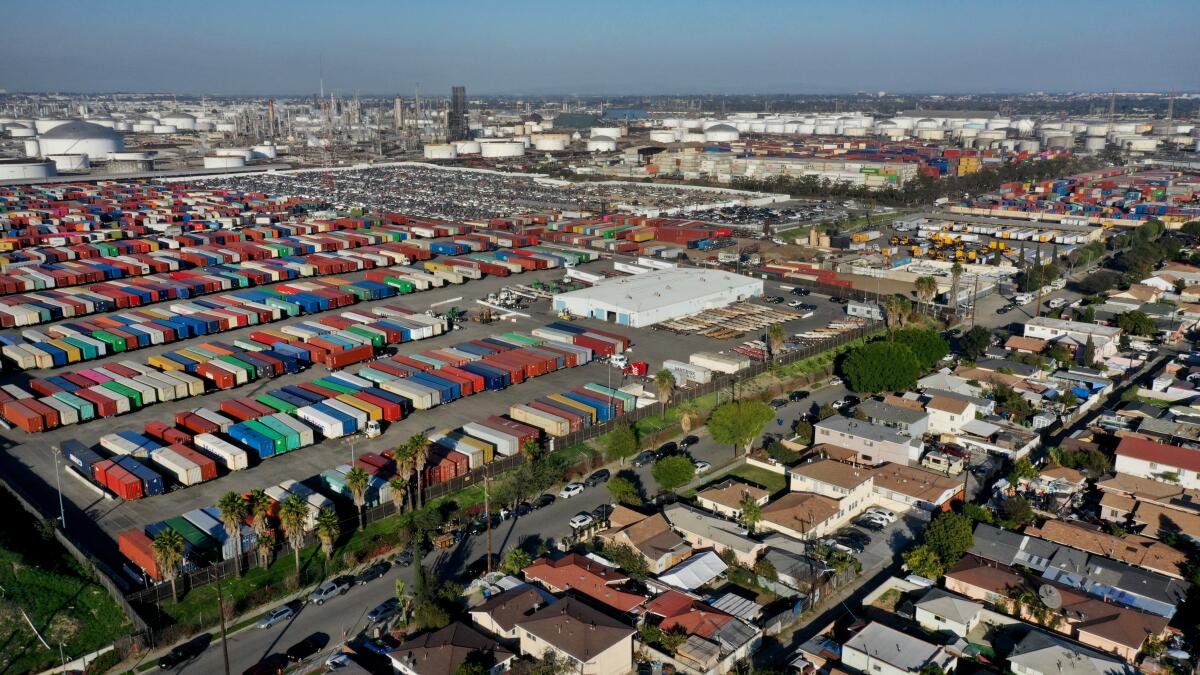
A visitor to Wilmington today might have a difficult time appreciating those changes. Containers still tower over homes. Trash and dumping still encircle the yards, and the mix of zoning still confounds urban planners like Mike Arizabal with the IBI Group.
Wilmington is a challenge for Los Angeles especially since parts of the community, once landfill and oil fields, are unsuitable for anything but industrial use.
“How do we rezone, and how do we reevaluate some of these uses that have been here for 60 years?” asked Arizabal, who has been studying traffic and congestion in the community. “How do we bring that into the 21st century?”
Further complicating the picture are the jobs that are at stake. New World Drayage pays its nearly 40 employees between $40,000 and $60,000 a year, Diaz said.
“I could turn down business,” she said, “but how will I pay the bills?”
This is the dilemma, said Nick Vyas with USC’s Marshall School of Business.
“The ports and supply chain-related industries are a substantial lifeline with great job opportunities, and yet on the other hand, if we don’t manage it properly, it will impact the lifestyle of these communities,” Vyas said.
Nearly a year into her violation, Diaz said that she has tried to reach City Hall and explain that she has no other place to put the containers. She estimates she would have to spend at least $140,000 for a comparable property.
Jeff Napier, spokesperson for the city’s Department of Building and Safety, could not speak about this case while it is still open, but said that property owners with violations can request additional time to comply.
“Our goal is to achieve compliance,” said Napier. “This is not punitive. We are sympathetic to business owners, but at the same time we have a responsibility to represent the community and their concerns.”
Diaz, however, has heard from the owner of the property that the violation, a misdemeanor, has been advanced to the city attorney, and she isn’t sure what she will do.
“I’m stuck,” she said.
In the meantime, she has silenced the beeping of the forklifts, rerouted trucks from residences and says she is trying to be a good neighbor.
More to Read
Sign up for Essential California
The most important California stories and recommendations in your inbox every morning.
You may occasionally receive promotional content from the Los Angeles Times.
